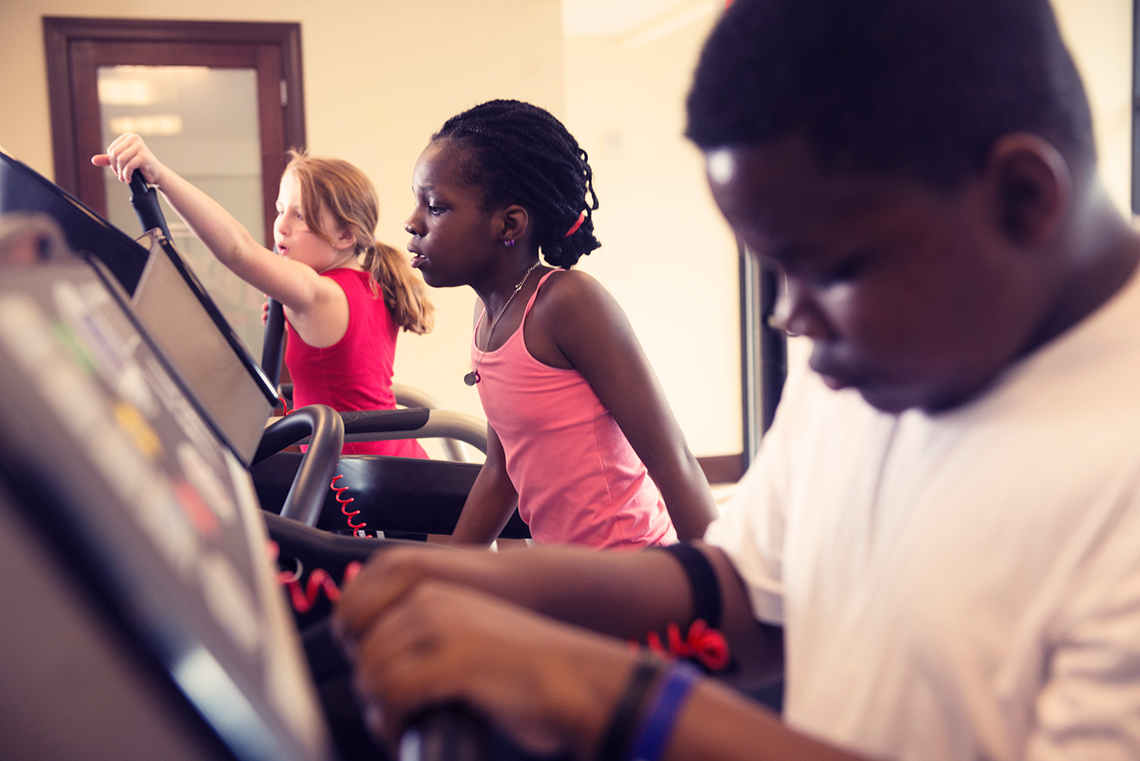Minds On
Activities that alter heart rate
A person’s heart rate raises and lowers throughout their day depending on the types of activities they are engaged in.
Explore the carousel of images for activities that alter a person’s heart rate. For each image, determine whether this activity would lower or raise their heart rate.
Select the correct answer, then press “Check Answer” to see how you did.
Action
Goal setting using the FITT principle

Consider activities that you enjoy doing. What are simple ways that they can be integrated more frequently into your day?
Here is one way we can establish goals to improve our fitness.
A well-designed personal physical activity plan will consider the following principles:
- Frequency – how often can you perform the activity?
- Intensity – how hard are you working?
- Time – how long are you performing the activity?
- Type – what are your goals or desired outcomes?
Using a method of your choice, develop at least three personal fitness goals for the remainder of the school year that will challenge you but at the same time are realistic based on your current fitness level. Be specific as possible and base your response by incorporating the FITT principles and considerations below.
- Present fitness level
- Age
- Health
- Skills
- Interests
- Availability of time
Example fitness goal
To improve my cardiorespiratory endurance, I will perform a 30-minute walk/bike/wheel in my neighbourhood at least three times a week. I will begin by working at a rate where I can feel myself breathing at a heavier rate than normal but can still comfortably carry out a conversation with a friend or family member. I will reassess my intensity goals at the end of each month.
Measuring intensity

How do you know if you’re working hard enough during your fitness routines to achieve your goals? You should find that the more you exercise, the easier movement may become as your body begins to adapt to your increased workloads. It is important to keep challenging your body, in a manner which is safe for your current physical fitness, to increase your overall well-being.
Your heart rate (HR) can tell you a lot about your current fitness level. In order to feel the benefits of exercise, you must move enough to increase your heart rate within a target range. But how do you know what range is best for you? This can be a complex question as everyone has a different body type and fitness goal, however as a general rule, you should find the following information as a good starting point.
What is resting heart rate?
Resting heart rate is the number of times your heart beats per minute while you’re at rest. It’s important to know your resting heart rate so that you can use it as a base line when determining your heart rate during or after exercise.
Calculating your resting heart rate
Try calculating your resting heart rate. To do this, make sure take a few minutes to sit down in a relaxed setting. Place your index and middle finger on the side of your neck, trying to locate the windpipe. There will be a small groove next to the windpipe where your pulse can be located. Apply gentle pressure to this position and you should feel your pulse. Once located, record how many times your heartbeat in 15 seconds. Take that number at multiply by 4 to calculate your total Beats per Minute (BPM). For students your age, a normal BPM could range anywhere from 60-100 beats per minute.
You can also find your pulse at your wrist or the inside of your elbow.
Calculating your target intensity rate
Now that you know your resting heart rate, we can use this information to set your fitness goals. First, you’ll need to calculate your Maximum Heart Rate. As a general rule to maintain safety, your maximum HR is the highest point you’d want your heart to beat per minute while exercising. It can be calculated as follows:
220 minus your age equals your maximum heart rate
To see improvements in your overall fitness, you’ll want to work within a moderate to vigorous range. This is often defined as 50-75% of your maximum HR. For example, a 12-year-old with a resting HR of 76 beats per minute would have a workout intensity rate of 114–133 beats per minute. To calculate this range:
Resting Heart Rate × 1.5 = 50% of your workout HR
76 (Resting Heart Rate) × 1.5 = 114 Beats per Minute
Resting Heart Rate × 1.75 = 75% of your workout HR
76 (Resting Heart Rate) × 1.75 = 133 Beats per Minute
Give it a try! Calculate your own workout intensity using the 50-70% range formulas. Immediately after each TVO Power Up workout, take your pulse to see if you were within your target intensity range.
Safety
Before you begin, consider these safety precautions:
Explore the following videos “TVO Circus Workout 3” and “TVO Circus Workout 4” to access two workouts.
Consolidation
Monitoring change

Reflect on how effective were the workouts in achieving the 50-70% intensity rate? What were your observations as you performing each exercise? Could you feel your heart rate increase? Think about your future fitness goals and what you can do to achieve them. Consider how you find enjoyment when selecting physical pursuits.
What could you do next time to increase, or decrease your intensity to work within your target range? Using a method of your choosing, establish three ways to modify your workout intensity. Keep a log to track your progress by monitoring changes in your heart rate. You should notice over time that with similar intensity during training, your heart rate should decrease. This means that your heart doesn’t need to work as hard to pump oxygen rich blood to working muscles.
Complete the Tracking My Heart Rate Progress Chart in your notebook or using the following fillable and printable document. If you would like, you can use speech-to-text or audio recording tools to record your thoughts.
| Date | Activity | Resting HR Before Workout | HR After Workout | Percent Intensity | Intensity Level Met? Yes or No |
|---|---|---|---|---|---|
Press the ‘Activity’ button to access Tracking My Heart Rate Progress Chart.
Reflection
As you read through these descriptions, which sentence best describes how you are feeling about your understanding of this learning activity? Press the button that is beside this sentence.
I feel…
Now, record your ideas using a voice recorder, speech-to-text, or writing tool.



